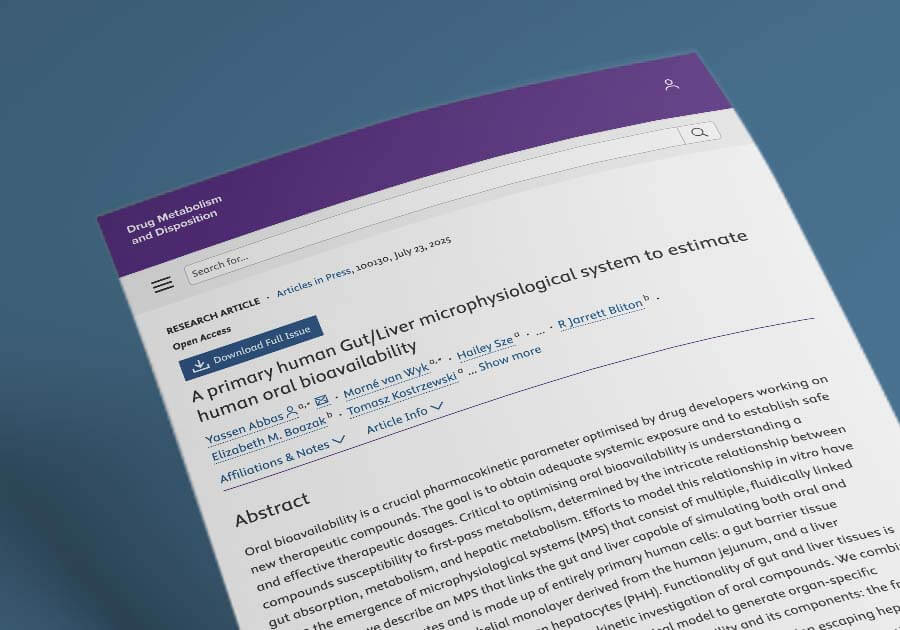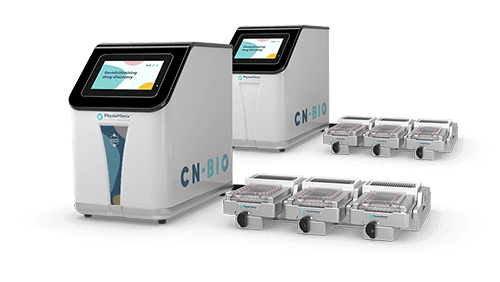Resource > Scientific publications >
A primary human Gut/Liver microphysiological system to estimate human oral bioavailability
Filed under: ADME and Drug bioavailability

Abstract
Oral bioavailability is a crucial pharmacokinetic parameter optimised by drug developers working on new therapeutic compounds. The goal is to obtain adequate systemic exposure and to establish safe and effective therapeutic dosages.
Critical to optimising oral bioavailability is understanding a compounds susceptibility to first-pass metabolism, determined by the intricate relationship between gut absorption, metabolism, and hepatic metabolism. Efforts to model this relationship in vitro have led to the emergence of microphysiological systems (MPS) that consist of multiple, fluidically linked organs. Here we describe an MPS that links the gut and liver capable of simulating both oral and intravenous dosing routes and is made up of entirely primary human cells: a gut barrier tissue comprised of an intestinal epithelial monolayer derived from the human jejunum, and a liver microtissue, derived from primary human hepatocytes (PHH). Functionality of gut and liver tissues is maintained in co-culture enabling the pharmacokinetic investigation of oral compounds. We combine the primary Gut/Liver MPS with a mechanistic mathematical model to generate organ-specific pharmacokinetic parameters and estimate human oral bioavailability and its components: the fraction absorbed (𝐹𝑎), the fraction escaping gut wall elimination (𝐹𝑔), and the fraction escaping hepatic elimination (𝐹ℎ). We use the CYP3A mediated compound midazolam, which is subject to both intestinal and hepatic extraction, to demonstrate the transformative potential of the primary Gut/Liver MPS to mechanistically model the pharmacokinetics of oral compounds in vitro.
Main take home messages:
- We have developed a Gut/Liver MPS composed entirely of primary human cells. This co-culture model maintains the metabolic functional integrity of both tissues and supports drug ADME studies via both oral and intravenous dosing routes.
- Our findings highlight the critical importance of using primary, functional gut cells to investigate compounds subject to intestinal metabolism.
- By integrating the Gut/Liver MPS with in silico modeling, we can predict tissue-specific pharmacokinetic parameters for both the gut and liver.
- Furthermore, we translate data generated from the MPS to predict human oral bioavailability and its key components: the fraction absorbed in the gut (Fa), the fraction escaping gut metabolism (Fg), and the fraction escaping hepatic metabolism (Fh).
- This work is impactful as it integrates primary human cells into a functional MPS specifically designed for ADME studies, in combination with computational modeling. This approach bridges the translational gap and, importantly, enables in vitro prediction of human oral bioavailability.





